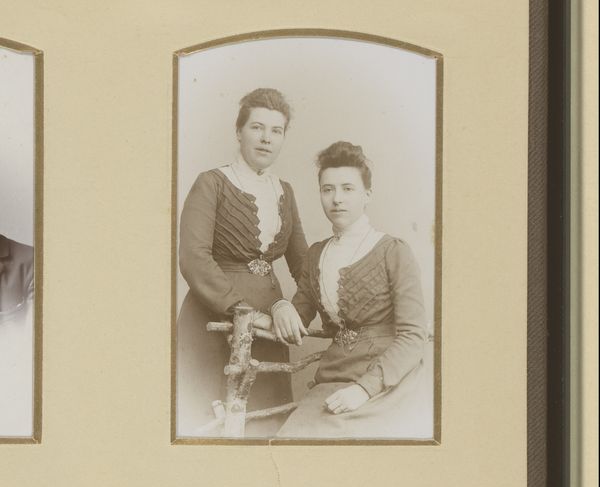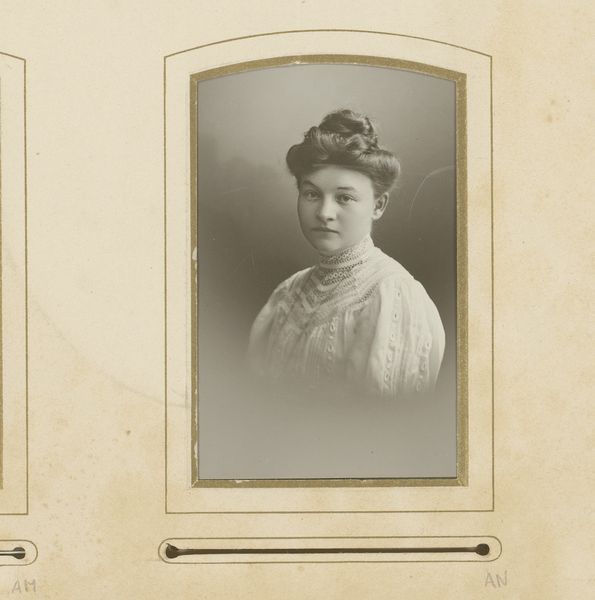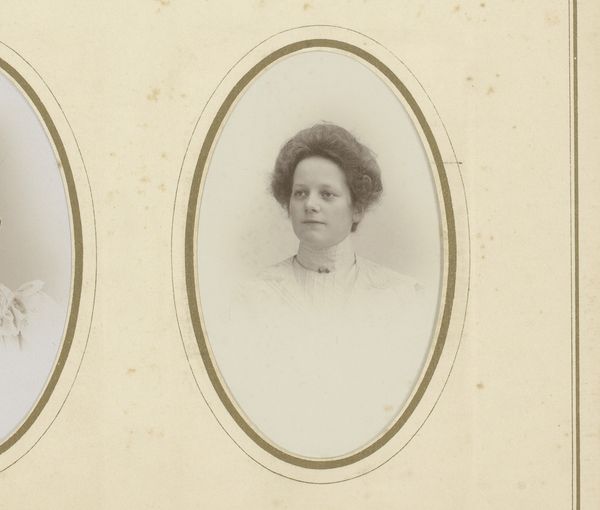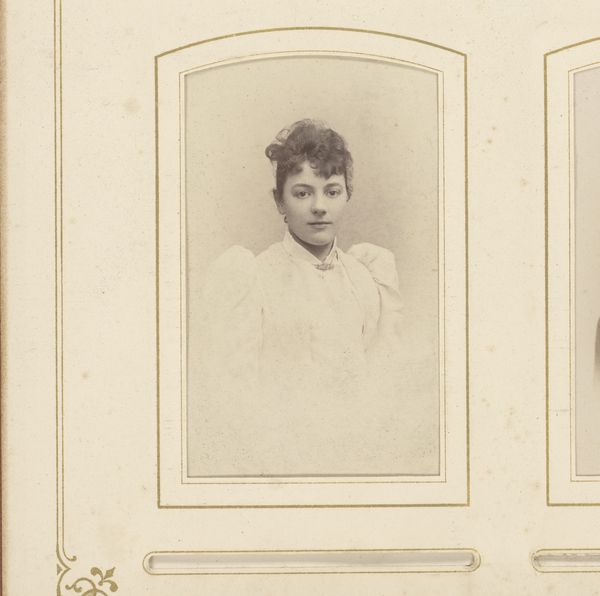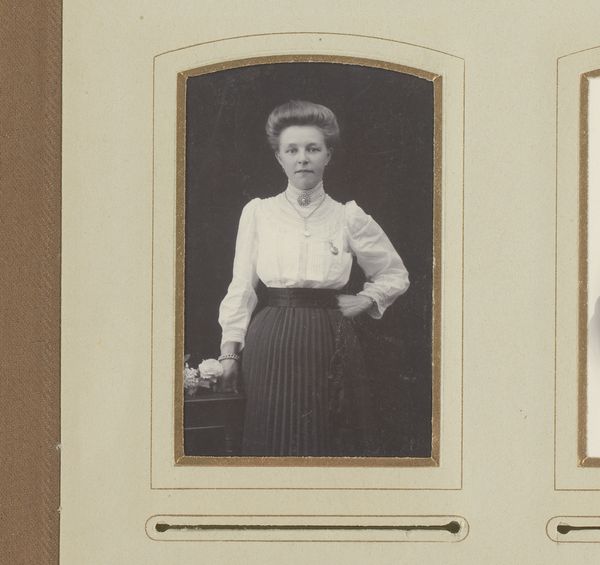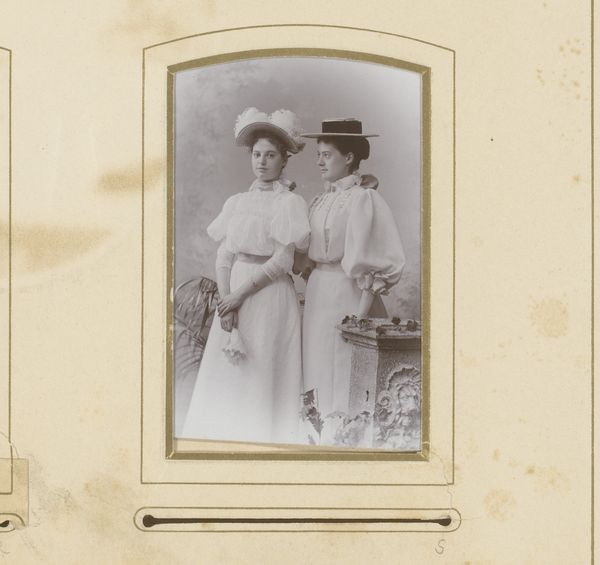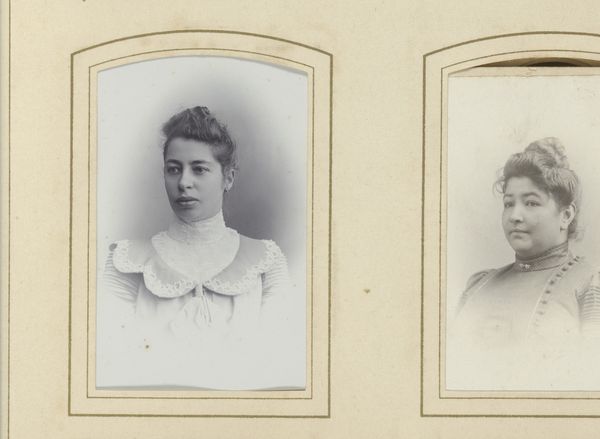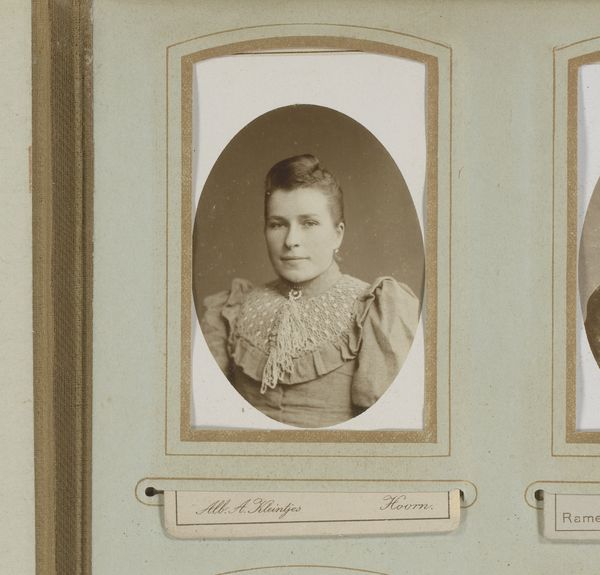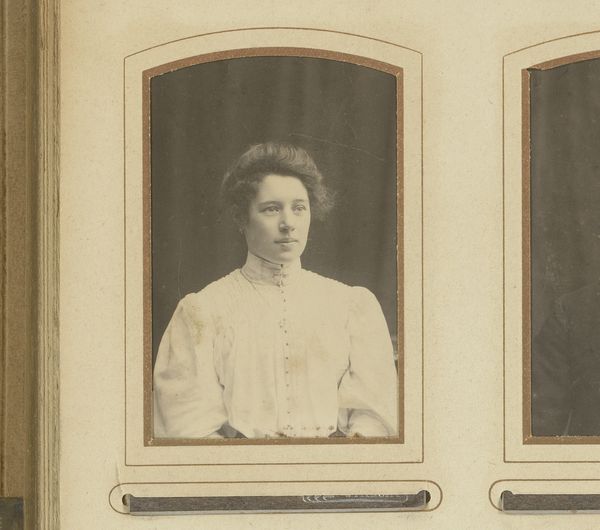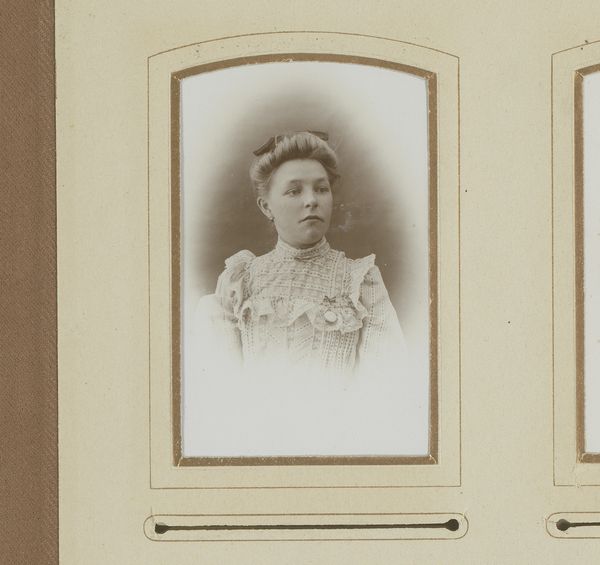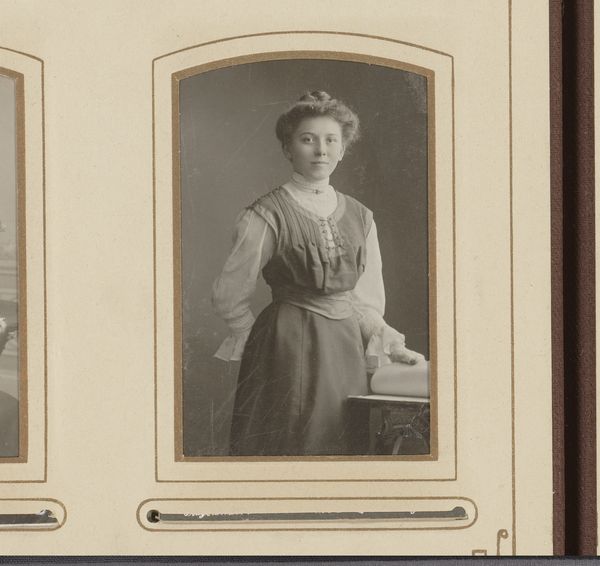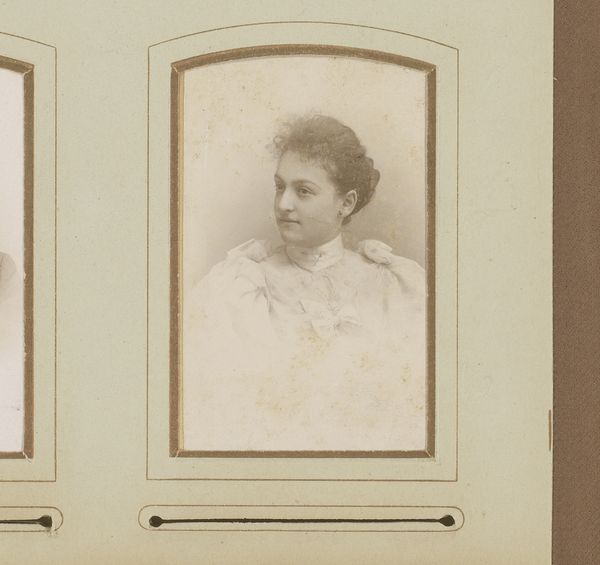
Portret van een tweeling meisjes, aangeduid als Berta en Paula Wrichs 1880 - 1940
0:00
0:00
samsonco
Rijksmuseum
photography, gelatin-silver-print
#
portrait
#
wedding photograph
#
archive photography
#
film poster
#
photography
#
historical photography
#
gelatin-silver-print
#
19th century
Dimensions: height 85 mm, width 51 mm
Copyright: Rijks Museum: Open Domain
Curator: Here we have "Portrait of Twin Girls, Referred to as Berta and Paula Wrichs," a gelatin-silver print created sometime between 1880 and 1940. It's part of the Rijksmuseum collection. Editor: There's an ethereal quality to this image; the soft light, the delicate ruffles of their dresses, almost give it a dreamlike feeling, and the way they’re posed, similar yet distinct, really pulls you in. Curator: Family photography like this served a vital function at the time. This would have been commissioned by a middle-class family to signify social stability and upward mobility, carefully staging the twins to project innocence and prosperity, a prevalent aspiration during this period. Editor: Note how the oval frame draws the eye. It isolates them. One twin actively engages us with direct eye contact and a raised hand, while the other rests hers upon what looks like a closed book and turns slightly away, suggesting contemplation and the limitations imposed on their access to education perhaps. It's quite a dynamic arrangement. Curator: The choice of a gelatin silver print was significant. It allowed for mass production of reasonably sharp images, and with these portraits circulating among the social network, they subtly bolstered the family’s prestige and connections. There is a performance inherent to portraiture during this time, an assertion of belonging to a particular social stratum. Editor: Indeed, even the seemingly simple bows in their hair act to balance the tonal values, anchoring the composition. But that gentle gradation in the background as it curves behind them is crucial for lifting the girls out. Curator: Photography studios played an integral role in shaping societal norms, defining representations of beauty and social class. These photographs helped dictate cultural scripts. They reinforced familial values within the broader community. Editor: And considering its place in an archive today, there’s an interesting tension: the calculated image created for private family consumption becoming available for wider interpretation in this public sphere, raising discussions on femininity, society, and the power of presentation. Curator: It offers a glimpse into how families used photography to build identities and engage within a very specific social ecosystem, capturing not just an image but the nuances of a time. Editor: It prompts a second look to analyze these intricate aesthetic codes and understand the historical weight imbedded within.
Comments
No comments
Be the first to comment and join the conversation on the ultimate creative platform.
